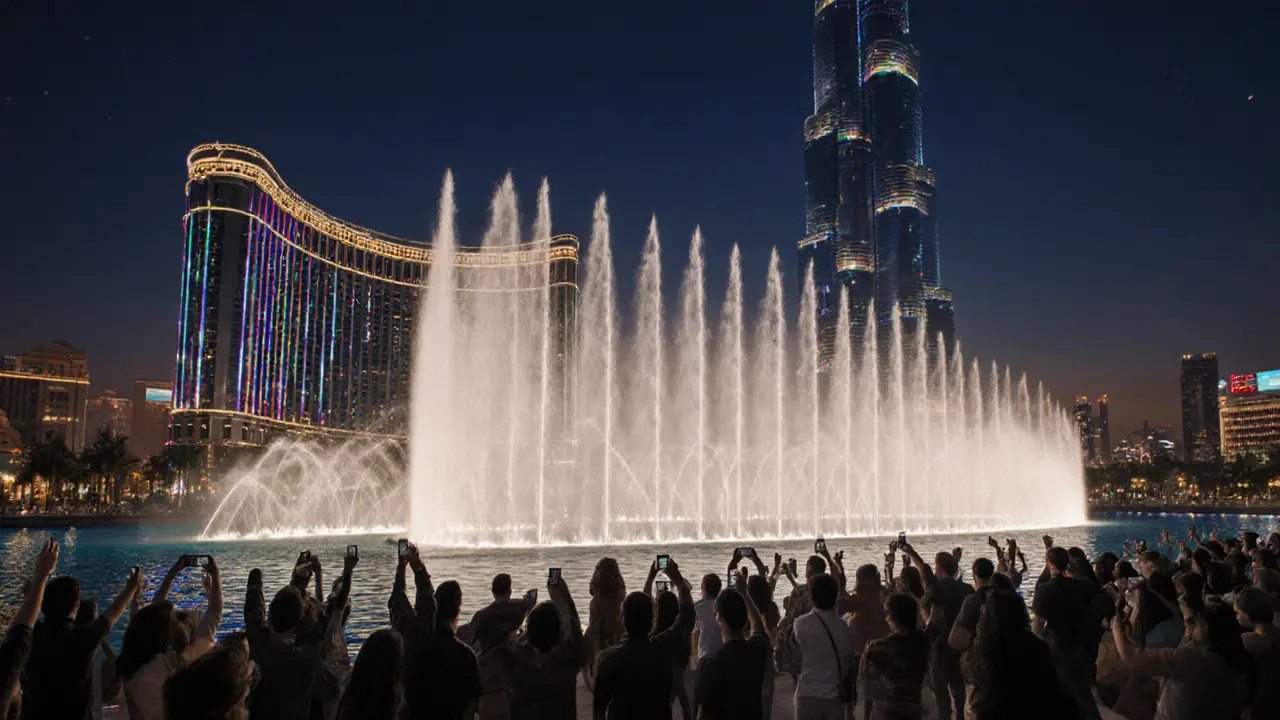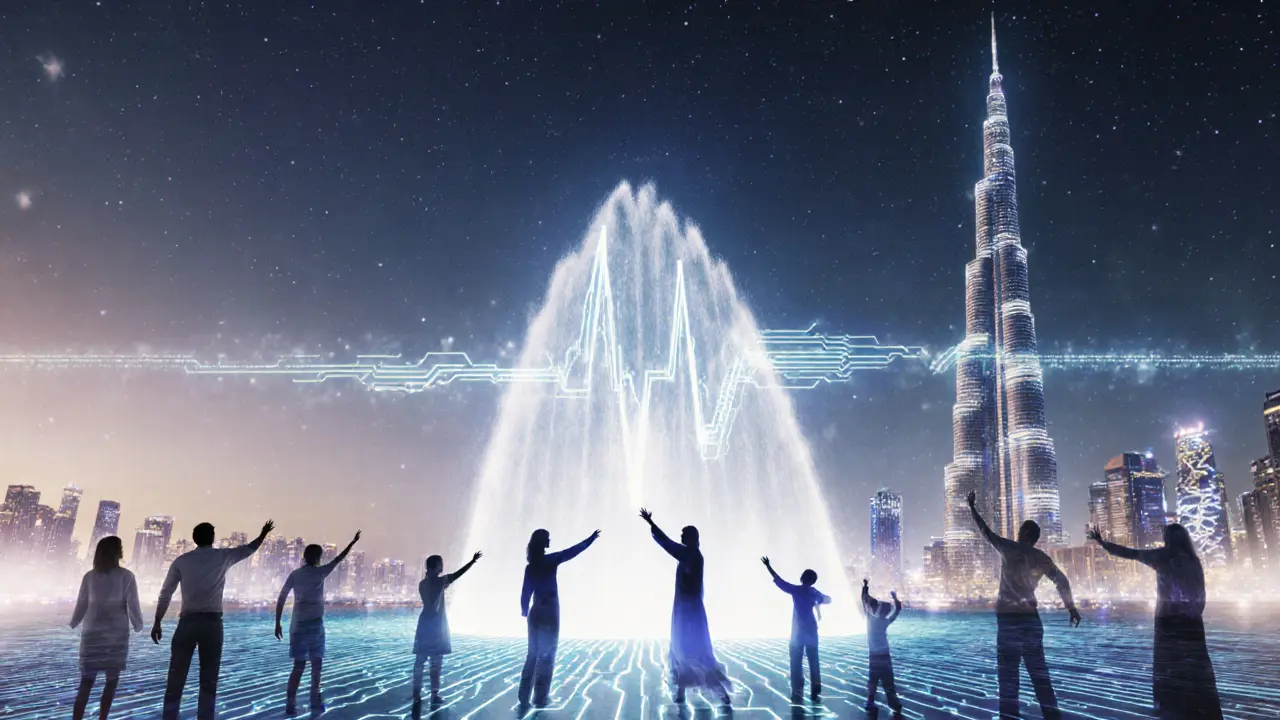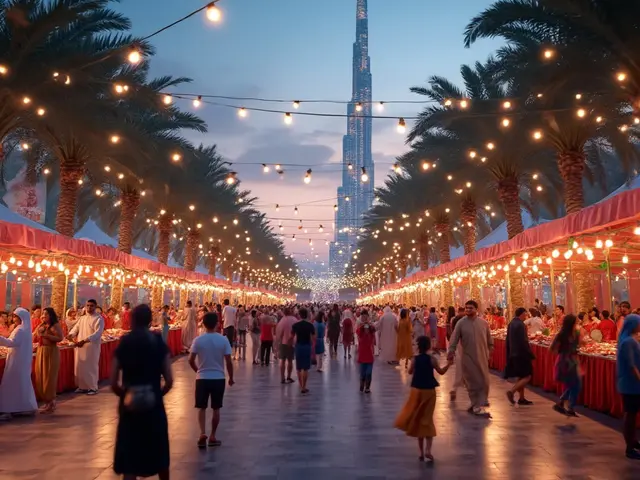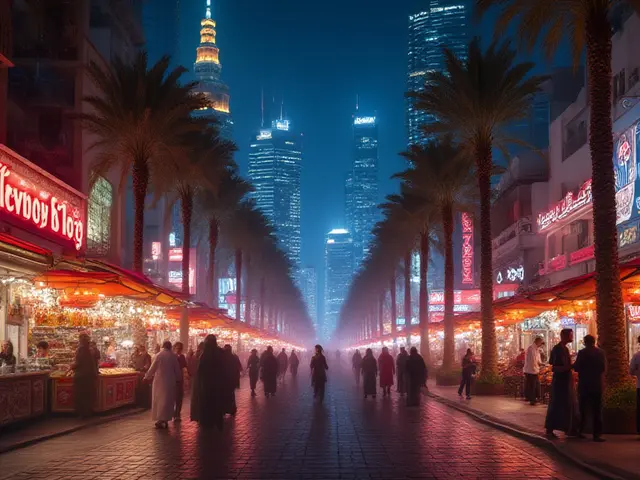
The Dubai Fountain doesn’t just shoot water into the air-it tells a story. Every evening, thousands gather on the shores of Burj Khalifa Lake, phones raised, eyes locked on a choreography of water that dances higher than a 20-story building. This isn’t a simple fountain. It’s the largest choreographed fountain system on Earth, a marriage of engineering, art, and sheer audacity that defines modern Dubai.
How Big Is the Dubai Fountain?
Let’s put it in numbers you can feel. The Dubai Fountain stretches 275 meters long-that’s longer than two football fields laid end to end. It spouts water up to 150 meters high, which is taller than the Statue of Liberty. Over 6,600 lights and 25 colored projectors turn the water into a living canvas. Each show uses 83,000 liters of water per minute, enough to fill an Olympic swimming pool in under five minutes.
The system runs on 3,000 nozzles, each engineered to control water pressure, spray angle, and height with millimeter precision. The water is recycled from the lake itself, filtered and reused, so the spectacle doesn’t drain Dubai’s resources. It’s a closed-loop system, designed for sustainability even as it dazzles.
Where It Fits in Dubai’s Skyline
The fountain doesn’t exist in isolation. It’s the centerpiece of Downtown Dubai, directly facing the Burj Khalifa-the tallest building in the world-and flanked by the Dubai Mall, one of the largest shopping centers on the planet. These three landmarks form a single urban experience: you shop, you climb, you watch water soar into the sky.
The fountain’s positioning was intentional. Its stage is oriented so the water arcs directly toward the Burj Khalifa’s mirrored facade, turning the tower into a giant screen for light reflections. At night, the building’s LED panels sync with the fountain’s music, creating a unified audiovisual performance that feels like the city itself is breathing.
The Technology Behind the Show
Beneath the beauty is serious tech. The fountain uses compressed air and high-pressure pumps to launch water into the air. Each nozzle is controlled by a computer system that reads music files and translates them into exact water patterns. The system can mimic the rhythm of a violin, the crash of a drum, or the swell of a symphony.
It’s not just about height. The fountain creates over 1,000 different water patterns-from delicate sprays that ripple like silk to powerful jets that punch straight up like geysers. The water is colored using LED lights embedded in the nozzles, so the same jet can glow blue one moment and red the next. The music? It’s a mix of global hits and classical Arabic compositions, curated to resonate with international visitors and locals alike.
The control room, hidden underground, runs on redundant systems. If one pump fails, another kicks in within seconds. The entire show runs on solar-powered energy grids, with backup generators ready for power outages. This isn’t just a tourist attraction-it’s a fully engineered urban infrastructure project.

When and Where to See It
The fountain performs every 30 minutes from 6 PM to 11 PM daily. On weekends, shows run every 20 minutes. The best viewing spots are along the Dubai Mall promenade, where you can stand right on the water’s edge. For a quieter experience, head to the upper-level walkways near the Dubai Mall’s entrance-less crowded, same view.
If you want to get closer, hop on a traditional abra boat. For a small fee, you can ride across the lake as the fountain erupts around you. The water mist brushes your face, the bass vibrates in your chest, and the Burj Khalifa looms above like a silent giant. It’s not just a show-it’s an immersion.
Why It’s More Than a Tourist Trick
Dubai didn’t build this to impress tourists. It built it to say something about itself. In a city known for pushing limits-the Burj Khalifa, the Palm Jumeirah, the indoor ski resort-the Dubai Fountain is the most poetic statement. It’s not about size for size’s sake. It’s about transforming water, something ordinary and fleeting, into something unforgettable.
It’s a symbol of control over nature, not domination. The water doesn’t flood. It doesn’t waste. It dances. It responds. It mirrors the city’s identity: ambitious, precise, elegant, and always moving forward.
Unlike other fountains that rely on nostalgia or tradition, the Dubai Fountain is entirely modern. No marble statues, no mythological figures. Just pure motion, light, and sound. It’s a 21st-century monument, built not for kings or gods, but for people who want to feel wonder.

What Makes It Unique Compared to Other Fountains
There are bigger fountains-like the King Fahd’s Fountain in Jeddah, which shoots water higher. But none combine scale, choreography, and technology the way Dubai does.
The Bellagio Fountains in Las Vegas are famous, but they’re smaller, shorter, and lack the architectural context. The Dubai Fountain doesn’t just sit in a plaza-it anchors a whole district. Its scale is matched by its integration into urban life. You don’t go to see the fountain. You go to see Dubai, and the fountain is part of that experience.
It also has the most complex music library. While other fountains repeat the same 10 songs, Dubai’s system plays over 100 tracks, rotated weekly. You might hear “Bohemian Rhapsody,” “Arabian Nights,” or “Despacito” in the same evening. The music changes with the season, holidays, and even global events.
How It Changed Dubai’s Public Spaces
Before the fountain opened in 2009, Dubai’s public spaces were mostly malls and highways. The fountain created the first true open-air gathering space in the city’s core. Families sit on the grassy lawns. Couples take photos. Kids chase the mist. Even at 10 PM, the area buzzes with life.
It inspired similar projects across the Gulf-Abu Dhabi’s Etihad Park fountain, Doha’s Waterfront Promenade-but none have matched its scale or integration. The Dubai Fountain became the blueprint for how modern cities can use public art to create emotional connection.
It’s also become a cultural touchstone. Wedding proposals happen here. Proposals are filmed and shared globally. It’s the backdrop for music videos, commercials, and even Olympic broadcasts. When people think of Dubai, they don’t just think of sand and skyscrapers. They think of water rising into the sky like a promise.
Is It Worth the Hype?
Yes. Not because it’s the biggest, but because it’s the most human. It doesn’t demand attention. It invites it. You don’t need a ticket. You don’t need to buy anything. You just show up, and the city gives you a moment of awe.
It’s free. It’s accessible. It’s unforgettable. And in a city where luxury often comes with a price tag, that’s rare.
Is the Dubai Fountain free to watch?
Yes, the Dubai Fountain is completely free to view from the public promenade around Burj Khalifa Lake. No tickets or reservations are needed. You can watch from the Dubai Mall walkways, the grassy lawns, or even from a nearby café. The only cost comes if you choose to take a boat ride on the lake for a closer view.
How long does each Dubai Fountain show last?
Each performance lasts between 5 and 10 minutes, depending on the time of day and the music selection. Shows run every 30 minutes from 6 PM to 11 PM daily, with more frequent shows on weekends and holidays. The longest shows are usually on Friday and Saturday nights.
What’s the best time to see the Dubai Fountain?
The best time is just after sunset, between 7 PM and 8 PM, when the sky is dark enough for the lights to shine brightly but the air is still warm. Arrive 20-30 minutes early to secure a good spot along the promenade. The crowd grows quickly after 8 PM, especially on weekends.
Can you see the Dubai Fountain from inside the Dubai Mall?
Yes, several areas inside the Dubai Mall offer clear views of the fountain. The main atrium near the entrance to the food court and the upper-level walkways overlooking the lake provide excellent sightlines. You can even watch the show while sipping coffee or eating dinner-no need to go outside.
Does the Dubai Fountain operate in the rain?
The fountain usually runs in light rain, but performances may be canceled during heavy storms or strong winds for safety reasons. The system is designed to handle water, but high winds can disrupt the spray patterns and make the show less impressive. Check the official Dubai Fountain website or app for real-time updates before heading out.




